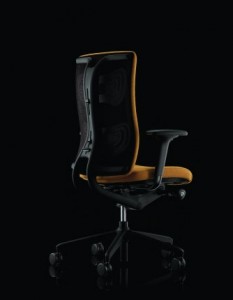
Editorial kindly provided by Patrick Boland – H&M Ergo Seating
With an increasing ‘always on’ society and the rise in instant international communications, many companies are under pressure to offer a more flexible 24/7 working environment to keep pace. This means they need equally flexible office systems and robust furniture to match. Add to that the well-publicised increasing size and weight of the world’s population and the heavy duty category looks like it could soon be considered the norm in office seating.
Chairs designed to suit heavy usage and those for heavier users have many crossovers, and the need for good, ergonomic design in this category is even more important than in a regular office chair. Shift workers often have to share a workstation with others so the need for a multiply adjustable chair to fit individual body shapes and working postures is essential to prevent strain or musculoskeletal problems. With the heavier or taller person, back, knee and joint problems are already more likely, so an extra supportive posture friendly chair is required.
24/7 working usually means more than one employee will have to use the same chair. An adjustable seat, back, arms, neck rest and lumbar support is therefore essential to accommodate all workers. This flexibility is achieved in quality ergonomic chairs through at least 10 points of adjustability including functions such as arm rest width adjustment, seat pan slider and seat tilt options that encourage a healthier zero gravity posture.
For the big and tall worker, flexibility and comfort are also essential design features, as is the need for greater support, hardwearing fabrics and a more robust build. Manufactures of good quality large and tall chairs will include reinforced backs, padded and reinforced arms, higher spec gas lifts and strengthened, contoured seat pans to add support, comfort as well as reduce stress on a heavier user’s frame. Good suppliers will also use a modular design in their heavy duty range, so individual parts can be repaired or replaced.
As the working world gets bigger and the working ‘day’ becomes more and more flexible, it’s easy to see that what we now regard as heavy duty options may well be the standard that office furniture will have to aspire to in the near future.
